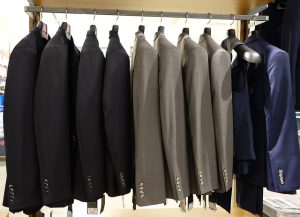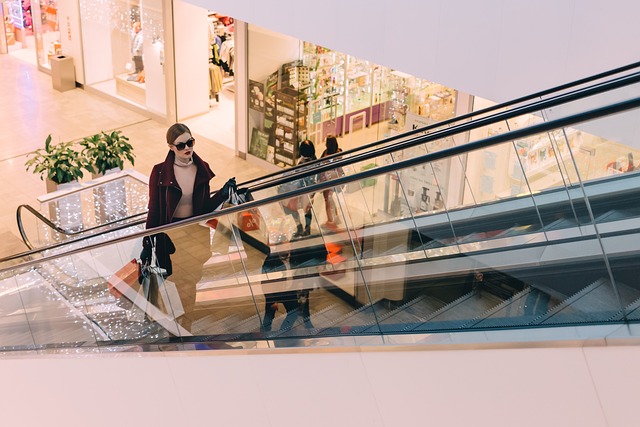By Amber Hovious, VP of Marketing and Partnerships at Teamwork Commerce,
Black Friday, the curtain raiser for the festive season, is fast approaching. Increased customer footfall during the shopping extravaganza provides retailers with enormous opportunities to drive sales. According to Statista, shoppers were expected to spend a total of £8.74 billion over the course of Black Friday weekend in 2023. Meanwhile, recent Statista forecasts indicate that the total value of retail sales made during the 2024 holiday season as a whole is estimated to reach £96 billion in the UK, increasing from 2023’s value of approximately £93 billion.
While it is clear that the festive season brings significant opportunities to drive sales volumes, it can also help brands boost consumer loyalty and expand their customer base. However, the opposite can happen if retailers fail to meet consumer expectations.
From delivering seamless and convenient shopping experiences to personalising each interaction with their customers, retailers must ensure customer satisfaction during Black Friday to be able to capitalise on increased opportunities during and after the busy shopping day. With Black Friday fast approaching, retail brands must prepare to make the most of the increased customer footfall and convert in-store visitors into loyal customers.
Delivering Real Convenience
Amidst the chaos of Black Friday madness, retailers must be able to facilitate convenience at every touchpoint of the customer shopping journey. Whether using RFID to help customers easily navigate items they are looking for, or deploying cutting-edge technologies such as mobile point-of-sale (POS) and RFID-powered self-checkout systems to streamline the checkout process, there are multiple ways retailers can lean on tech innovations to deliver convenience.
By leveraging mobile POS technology, retailers can empower their associates to bring POS to the customer and complete transactions from any part of a store. Not only does this dramatically reduce checkout queues, but it also allows customers to complete their checkout process seamlessly. Additionally, store associates are not tied to a traditional checkout terminal. They can move around the store, helping customers, answering their queries, and completing transactions seamlessly. Similarly, RFID-powered self-checkout systems can facilitate seamless checkout experiences, automatically scanning items placed on customers’ scanning baskets and completing checkout transactions within seconds. This allows customers to swiftly complete the checkout process, providing a high level of convenience.
Personalising Interactions
While convenience significantly improves the customer experience, customer interactions can be significantly enhanced when combined with a number of other elements – including the availability and visibility of the inventory, high-quality customer personalisation, and exciting discounts. This ensures that customers leave the store feeling satisfied.
Today’s innovative mobile POS solutions also feature integrated customer relationship management (CRM) systems that function in real-time. Associates can use these tools to personalise their interactions with the customer – from suggesting products that match their size and style to offering personalised discounts tailored to their preferences. Meanwhile, using integrated mobile POS solutions can also help associates update all relevant information in real-time. As a result, retailers can tailor the omnichannel experiences of their shoppers.
Based on the in-store data provided by mobile POS solutions, retailers can tailor online experiences and make them more consistent for their customers. By analysing recent in-store purchases made by the customer, brands can make informed suggestions when the same customer explores their online store. Not only does this enhance the shopping experience, but can also increase sales. All this contributes to a high-quality customer experience that significantly boosts customer loyalty.
Turning Festival Footfall Into Loyal Customers
Undoubtedly, using Black Friday footfall to drive sales volumes is important for retailers. However, if brands want to thrive in the long term, they must not consider short-term sales as their primary and end goal. The true value lies in expanding the customer base, converting first-time shoppers into loyal customers, and understanding evolving customer habits. Retailers who can deliver top-tier experiences can make sure customers are returning to make purchases again.
One way retailers can achieve this is by not only focusing on pushing sales but significantly improving the shopping and post-purchase experience of customers. Whether by rewarding shoppers through loyalty programs using advanced CRM tools or using customers’ information to wisely tailor brand communications, retailers can encourage customers to come back, resulting in repeat customers. This, if done consistently, can help retailers maximise their loyal customer base in the long term, resulting in sustainable growth.
Ultimately, brands need to understand that there is no single element that can help them achieve everything. Retailers must be able to get several factors together in order to meet evolving customer expectations. An integrated and all-encompassing approach to tech can help brands achieve their objectives and thrive in the market. Those who prepare now can significantly benefit during the busy shopping season and the new year ahead.
About the Author

Amber Hovious, is the VP of marketing & Partnerships at Teamwork Commerce. Amber has been part of the Teamwork Commerce family for 7 years, building out the marketing strategy, business growth and approach as well as cultivating a wide array of partnership relationships to drive long-term success.
Related Articles

Hexnode CEO on how the “Holiday Illusion” is Masking the Risks of Retail’s Seasonal Workforce
The danger of seasonal hires is magnified not just by who is accessing the network, but when they are doing it. Sophisticated threat actors possess a deep understanding of the retail operational calendar.

The New Frugality: How Inflation and Tariffs Are Reshaping Consumer Spending
One of the most telling shifts is how shoppers approach decision-making. Where convenience once dominated, consciousness now plays a larger role. People are researching more before making a purchase, comparing prices across multiple platforms, and questioning whether they really need the product in the first place.

Embracing new concepts vs the return to brick-and-mortar
Balancing the return to physical retail and the development of new technologies to enhance customer experience and drive operational efficiency for long-term success.
Enartis to Acquire Parsec in Winemaking and Retail Deal
The deal will bring Enartis and Parsec together to help wineries manage every part of production more easily and efficiently, from grape to bottle.


 for the latest news and job opportunities in retail tech
for the latest news and job opportunities in retail tech 